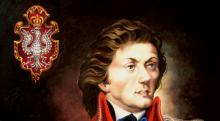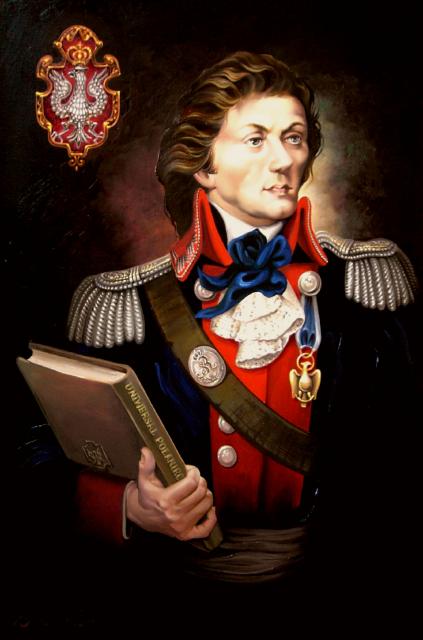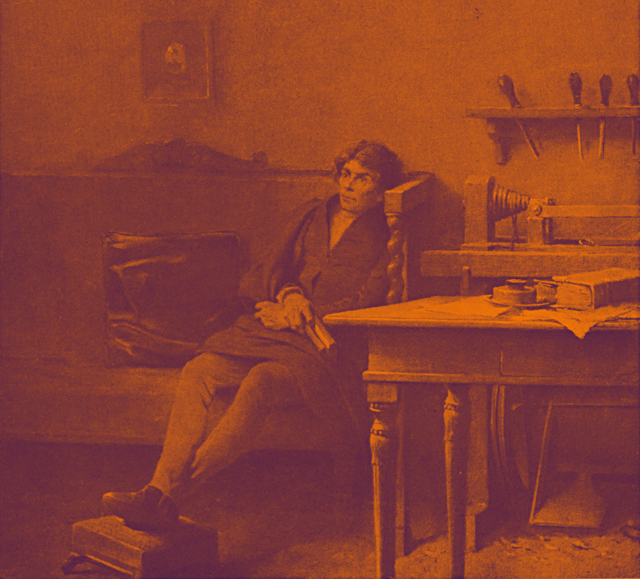
Kościuszko, painted by Piotr Szałkowski |
Tadeusz Kosciuszko is a larger-than-life historical figure. A hero of the American War of Independence, as well as Poland’s struggle for freedom against her oppressors, his life has been documented in many books and films. Most of these focus on the highlights: his talents as a war strategist and engineer that contributed to America’s victory over Britain; or his leadership of the Polish nation during the Insurrection of 1793, when he rallied the people towards his vision of a free and just Poland.
Poland shall yet dance (2015), produced by Kosciuszko Heritage Inc., explores an episode from Kosciuszko’s life that is often barely touched upon by storytellers. It's primary focus details the period when the leader was captured and held as a prisoner of war by Catherine II (the Great) of Russia after the failed insurrection, and his subsequent banishment from Poland. The film shows that, in his time of defeat, Kosciuszko was a man of courage, vision and compassion, who was admired the world over as a freedom fighter and humanitarian.
The film utilizes a combination of narration, dialogue and music played over a variety of images, including quotations to tell the story. This creates a complex structure that works really well in places and not so well in others.
Narration in the film gives backgroundinformation, while dramatization through dialogue brings the events to life. Some of the voice acting is expressive and well-implemented. An example is the riveting description of the Battle of Maciejowice. The dialogue is interesting and engaging, once the viewer works out who is speaking, which is not always clear. Ideally, the Russian and French parts should have been voiced by native speakers, as the accents sound forced and may be construed as mocking.
The breadth of imagery here is amazing: from oil paintings from a bygone era to modern day cartoons, it gives a sense of Kosciuszko being alive in both the Polish and world culture. The pictures help to immerse the viewer in the events being described. Some great quotes have been used throughout the film, such as and freedom shrieked… as Kosciuszko fell (John Keats). The quotes should have been left without a voiceover and given enough air time to allow the viewer to take them in. Otherwise these gems can be missed on first viewing.
The music, written especially for the documentary, captures the mood of the film and Kosciuszko’s place in history: the time when he was alive, the trials and tribulations he and his men endured, and the sacrifices they made. It breathes life into the images and gives them a sense of movement.

Kościuszko. Uniwersał Połaniecki. Painted by Piotr Szałkowski |
The film presents a rich tapestry of information, that, however, might overwhelm the viewer, especially one who is not well-versed in Polish history. Poland shall yet dance is an English language version of a Polish film of the same title. Knowledge of Polish history is required to follow the storyline. The English version does have a brief prologue that offers tantalizing bites of information, but is not adequate to set the scene. Simple narration, such as that used in the epilogue, would have worked better in the prologue. Some background reading would give the viewer context for the film’s narrative.
This film does not treat the historical events in an impartial manner, but takes a passionate stand. Poland shall yet dance is a loving tribute to Kosciuszko. Above all, it shows his belief that all people are deserving of dignity through freedom. Kosciuszko’s name, the film asserts, is at home in a nation that holds these ideals close to its heart.
George and Monika Athanasiou

Zygmunt Ajdukiewicz, Kosciuszko in the St Petersburg jail |
| 

